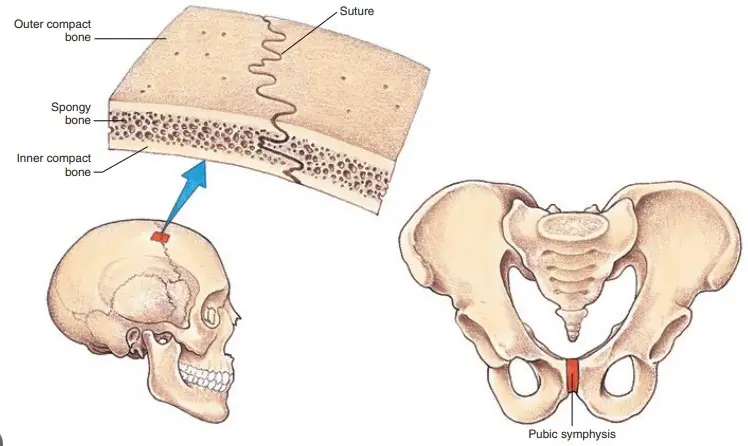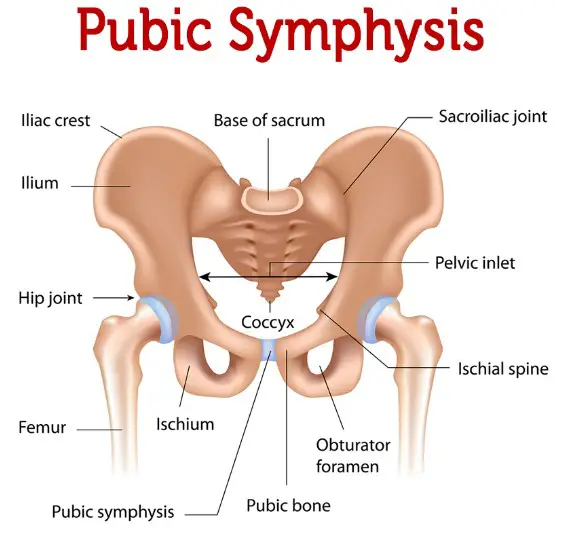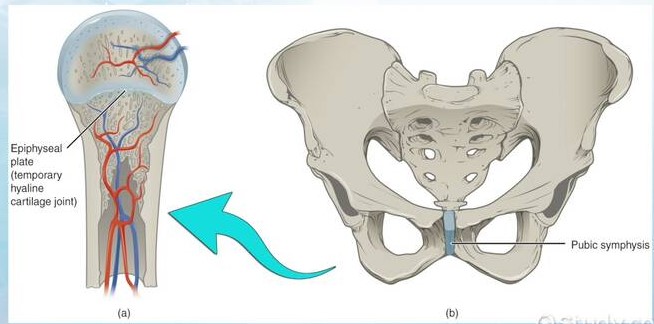The human body is a marvel of engineering, with its structure enabling a myriad of movements and functions essential for daily life. Among the various components contributing to this functionality, joints stand out as pivotal elements that connect bones, allowing for mobility and flexibility. In the complex world of joints, two specialized types – synchondrosis and symphysis – play unique roles, yet often get confused due to their cartilaginous nature.
Synchondrosis and symphysis represent two distinct forms of cartilaginous joints within the human body. Synchondrosis is characterized by hyaline cartilage that directly joins bones and is typically found in growth areas of children, such as the epiphyseal plate in long bones. Symphysis, on the other hand, involves a fibrocartilage pad that joins bones together, exemplified by the pubic symphysis and intervertebral discs, which offer a combination of strength and flexibility crucial for various movements and support.
These joint types not only differ in their cartilage composition but also in their functional roles and locations within the body. Synchondrosis often serves a temporary purpose in the skeletal growth and development process, eventually ossifying into a rigid bone connection. Conversely, symphysis joints provide enduring flexibility and shock absorption, facilitating movements such as walking, bending, and twisting. Understanding these differences sheds light on how our bodies maintain balance between stability and motion, a testament to the intricacies of human anatomy.

Joint Basics
Types of Joints
Definition and Role in the Body
Joints are vital components of the skeletal system, acting as the meeting points between bones. They play a crucial role in providing flexibility, mobility, and support to the body, enabling a wide range of movements. Without joints, tasks from walking to grasping objects would be impossible.
Overview of Fibrous, Cartilaginous, and Synovial Joints
Joints are classified into three main types based on their structure and the material connecting the bones:
- Fibrous Joints: These joints are connected by dense connective tissue and are mostly immovable. A classic example is the sutures in the skull.
- Cartilaginous Joints: Connected by cartilage, these joints allow more movement than fibrous joints but are less flexible than synovial joints. They are subdivided into synchondrosis and symphysis.
- Synovial Joints: The most mobile type of joint, surrounded by a fluid-filled capsule that allows for significant movement. Examples include the knee and elbow.
Joint Functionality
How Joints Contribute to Body Movements
Joints facilitate body movements by allowing bones to move past each other in a controlled and stable manner. The range of motion varies significantly among different types of joints, from the limited movement in the spine’s vertebrae to the wide range of motion in the shoulder.
The Role of Cartilage in Joints
Cartilage is a semi-rigid but flexible tissue that plays a critical role in joint function. It covers the ends of bones where they meet, reducing friction and acting as a shock absorber during movement. The health of cartilage is essential for smooth joint operation and mobility.
Synchondrosis Explained
Definition
Synchondrosis is a type of cartilaginous joint where bones are joined by hyaline cartilage, allowing for growth and stability. These joints are primarily found in growing children and are temporary, usually ossifying into solid bone in adulthood.
Basic Concept and Characteristics
Synchondrosis joints are characterized by their role in growth and development. They provide a balance between rigidity for support and flexibility for growth.
Location Examples in the Body
Notable examples include the first sternocostal joint of the rib cage and the epiphyseal plates in long bones, which are crucial for bone lengthening during growth.
Features
Cartilage Type Involved
Hyaline cartilage, which is smooth and glass-like, is the primary component of synchondrosis joints. This type of cartilage facilitates growth while supporting the structure.
Function and Lifespan
Synchondrosis joints function as growth centers, allowing bones to lengthen until maturity. Their lifespan ends when the cartilage ossifies, forming a permanent, immovable bond.
Key Examples
First Sternocostal Joint
This joint connects the first rib to the sternum and is typically immobile, contributing to the rib cage’s stability.
Epiphyseal Plates in Children
Also known as growth plates, these are found in long bones and are responsible for bone growth in length during childhood and adolescence.
Symphysis Explored
Definition
Symphysis joints are a subtype of cartilaginous joints where bones are joined by a pad of fibrocartilage. They allow for limited movement and are designed to absorb shock, providing flexibility and strength to the skeletal framework.
Basic Concept and Characteristics
Unlike synchondrosis, symphysis joints are permanent and are found in adults as well as children. They are essential for movements and shock absorption in the midline structures of the body.
Common Locations
The most well-known symphysis joints are the pubic symphysis in the pelvis and the intervertebral discs between the vertebrae.
Features
Type of Cartilage Present
Fibrocartilage, which is tougher and more flexible than hyaline cartilage, constitutes symphysis joints. This cartilage type is ideal for withstanding pressure and tension.
Function in the Body
Symphysis joints provide stability and flexibility, allowing for movements such as bending and twisting. They play a key role in distributing loads during movement and standing.
Key Examples
Pubic Symphysis
Located between the left and right pubic bones, this joint allows for slight movement to accommodate walking and childbirth.
Intervertebral Discs
These discs act as cushions between the vertebrae, allowing for flexibility in the spine and absorbing shocks during activities.

Comparing Synchondrosis and Symphysis
Structural Differences
Cartilage Types
Synchondrosis joints are primarily made up of hyaline cartilage, which is smooth and allows for growth and development. This type of cartilage is found in areas of the body where bones need to grow or lengthen, such as the growth plates in long bones.
On the other hand, symphysis joints consist of fibrocartilage, which is denser and designed to withstand pressure and tension. Fibrocartilage provides strength and flexibility, making it ideal for joints that need to absorb shock, such as the pubic symphysis and intervertebral discs.
Physical Properties
The physical properties of these two types of cartilage reflect their functions. Hyaline cartilage in synchondrosis joints is more pliable, supporting growth and enabling the initial mobility necessary for bone development. Meanwhile, the fibrocartilage in symphysis joints is tougher and more resilient, providing the necessary support for weight-bearing and movement in the adult body.
Functional Differences
Movement Allowance
Synchondrosis joints, due to their hyaline cartilage, allow for some movement during early development but eventually ossify and become immobile. This transition is crucial for stabilizing certain parts of the skeleton, such as the long bones and rib cage.
Symphysis joints, with their fibrocartilage, permit a greater degree of movement throughout life. This flexibility is key to the function of the spine and pelvis, accommodating a range of activities from bending and twisting to walking and childbirth.
Lifespan and Changes Over Time
The lifespan of synchondrosis and symphysis joints highlights their differing roles in the human body. Synchondrosis joints are temporary structures that exist primarily during growth periods, ossifying as the individual reaches adulthood. Symphysis joints, however, persist throughout an individual’s life, adapting and sometimes degenerating with age, which can lead to conditions like osteoarthritis.
Clinical Significance
Implications in Health and Disease
The health of synchondrosis and symphysis joints has significant implications for overall skeletal health. Issues with synchondrosis joints during development can lead to growth abnormalities, while problems with symphysis joints can result in pain, reduced mobility, and decreased quality of life.
Treatment Considerations
Treatment for issues related to synchondrosis and symphysis joints varies widely, from conservative management with physical therapy to surgical intervention. For instance, premature closure of growth plates (synchondrosis) may require surgery to correct length discrepancies in limbs, while degeneration of symphysis joints like the intervertebral discs may be managed with a combination of medication, physical therapy, and, in severe cases, surgery.
Evolution Over Time
Synchondrosis to Symphysis
Cases of Transition
One notable transition from synchondrosis to symphysis can be observed in the growth plates of long bones. As a child grows, these plates eventually ossify and form a solid bone, marking the transition from a growth-oriented structure to a stable, supportive one. This process underscores the dynamic nature of our skeletal system, evolving from flexibility for growth to stability in adulthood.
Significance in Growth and Aging
This evolution is significant not only for individual growth but also for understanding the aging process. As synchondrosis joints ossify, they lay the groundwork for adult skeletal structure. Meanwhile, the wear and tear on symphysis joints over time can tell us much about aging, resilience, and the limits of the human body.
Impact on Movement
How Age Affects Synchondrosis and Symphysis
The aging process has a profound effect on both synchondrosis and symphysis joints. While synchondrosis joints have already served their purpose by adulthood, symphysis joints face the challenges of wear, tear, and potential degeneration. This can lead to conditions like osteoarthritis, which significantly impact mobility and quality of life.
Adaptations and Limitations
Our bodies adapt to the changes in these joints in various ways. Muscles and tendons may compensate for decreased joint mobility, while bone density can increase in response to stress. However, there are limitations to these adaptations, particularly as they pertain to symphysis joints, which can degrade with age and use. Understanding these processes is key to managing health and mobility in the later stages of life.

Frequently Asked Questions
What is Synchondrosis?
Synchondrosis refers to a type of joint where bones are joined by hyaline cartilage, allowing little to no movement. This joint type is pivotal during growth stages, prominently featured in areas like the epiphyseal plates of long bones in children. As growth concludes, these joints typically ossify, transitioning into solid bone unions.
How does Symphysis differ from Synchondrosis?
Unlike synchondrosis, symphysis joints are characterized by a fibrocartilaginous pad that cushions and connects bones, permitting a degree of movement and flexibility. This type of joint is crucial for movements and functions that require durability and shock absorption, such as walking or the expansion of the pelvis during childbirth.
Why is understanding these joint types important?
Grasping the differences between synchondrosis and symphysis is essential for a comprehensive understanding of human anatomy and physiology. Knowledge of these joint types aids in diagnosing and treating related conditions, understanding growth patterns in children, and recognizing the impact of aging on skeletal flexibility and strength.
Conclusion
The distinction between synchondrosis and symphysis joints underscores the sophistication of the human skeletal system, revealing how our bodies balance rigidity with movement. Through the lens of these two joint types, we gain insights into the critical roles they play in growth, mobility, and overall skeletal health. This understanding not only enriches our knowledge of human anatomy but also emphasizes the importance of maintaining joint health for lifelong mobility and well-being.
Recognizing the unique characteristics and functions of synchondrosis and symphysis joints enriches our appreciation for the complexity of the human body. As we uncover the nuances of these joints, we unravel the broader narrative of how the body’s components intricately work together to support life’s essential movements and functions, highlighting the incredible adaptability and resilience of our skeletal system.

